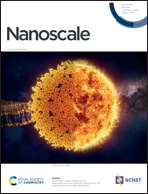Pyrolysis-free synthesis of a high-loading single-atom Cu catalyst for efficient electrocatalytic CO2-to-CH4 conversion†
Abstract
Electrocatalytic CO2-to-CH4 conversion provides a promising means of addressing current carbon resource recycling and intermittent energy storage. Cu-based single-atom catalysts have attracted extensive attention owing to their high intrinsic activity toward CH4 production; however, they suffer from uncontrollable metal loading and aggregation during the conventional pyrolysis process of carbon-based substrates. Herein, we developed a pyrolysis-free method to prepare a single-atom Cu catalyst anchored on a formamide polymer substrate with a high loading amount and well atomic dispersion through a mild polycondensation reaction. Owing to the isolation of copper active sites, efficient CO2-to-CH4 conversion is achieved over the single-atom Cu catalyst, along with the significant suppression of C–C coupling. As a result, the optimal single-atom catalyst with 5.87 wt% of Cu offers high CH4 faradaic efficiencies (FEs) of over 70% in a wide current density range from 100 to 600 mA cm−2 in the flow cell, together with a maximum CH4 partial current density of 415.8 mA cm−2. Moreover, the CH4 FE can reach 74.2% under optimized conditions in a membrane electrode assembly electrolyzer. This work provides new insights into the subtle design of highly efficient electrocatalyst for CO2 reduction.

- This article is part of the themed collection: Nanoscale 2024 Emerging Investigators


 Please wait while we load your content...
Please wait while we load your content...